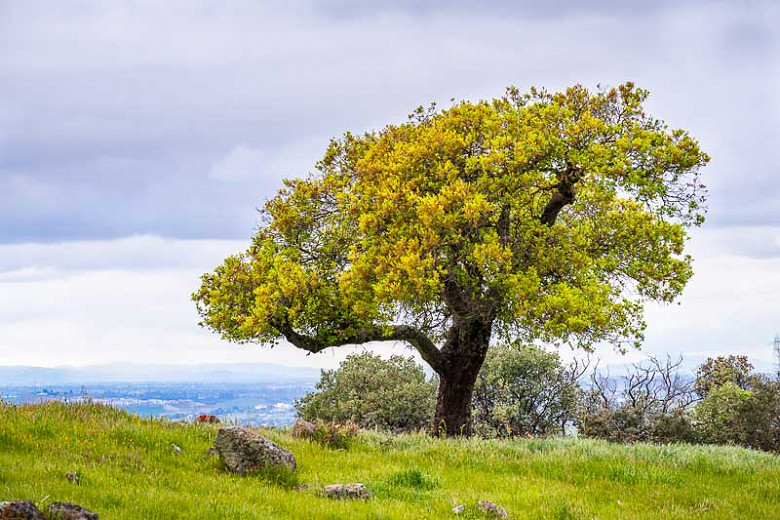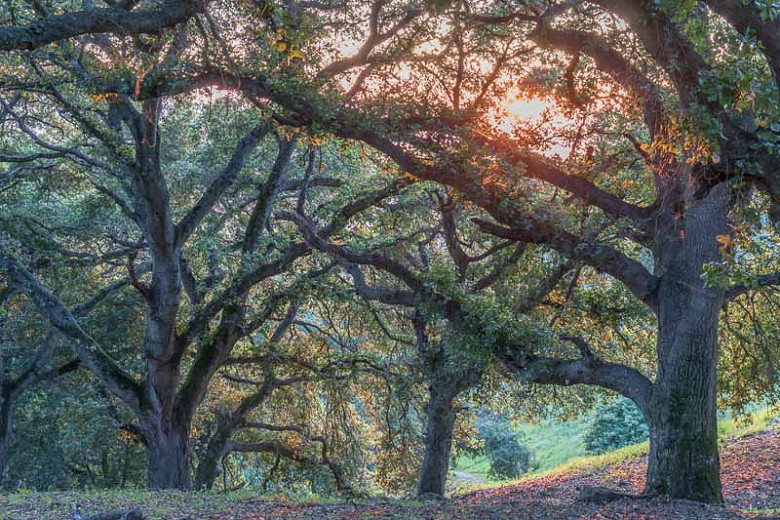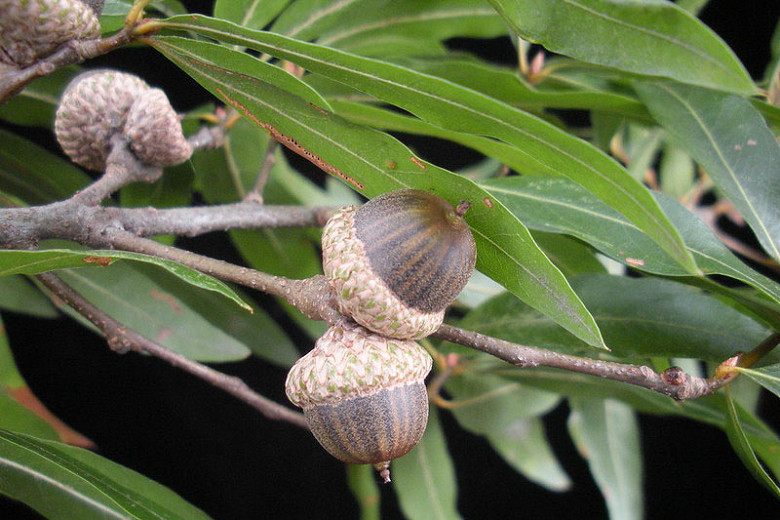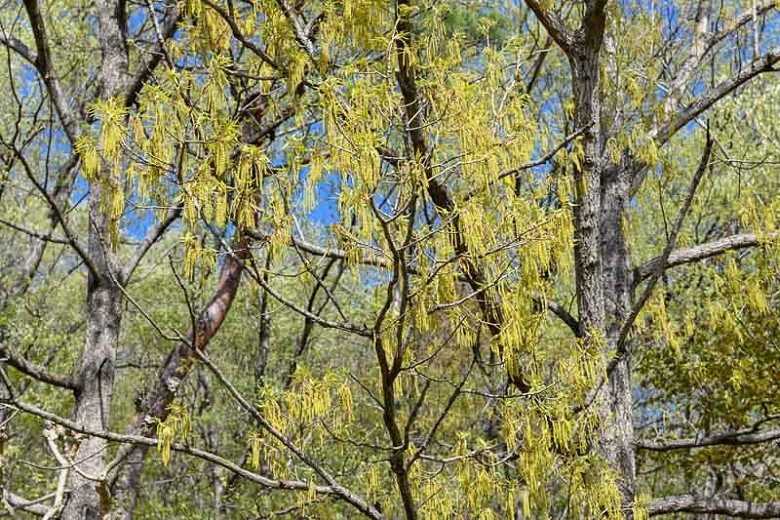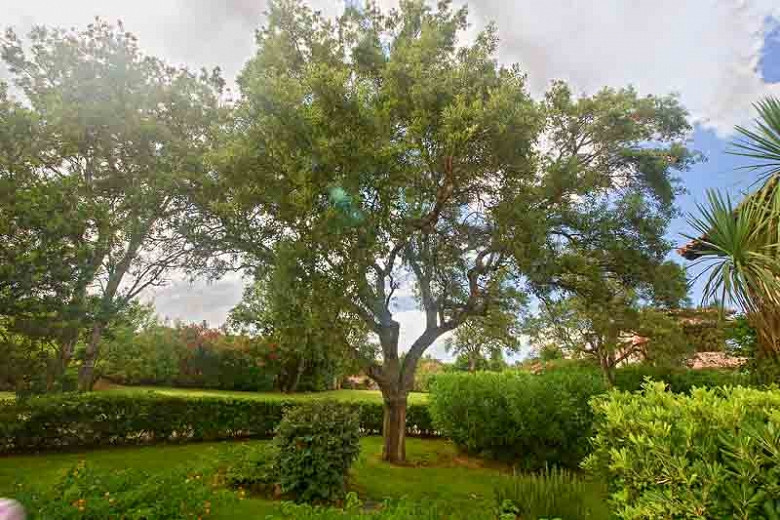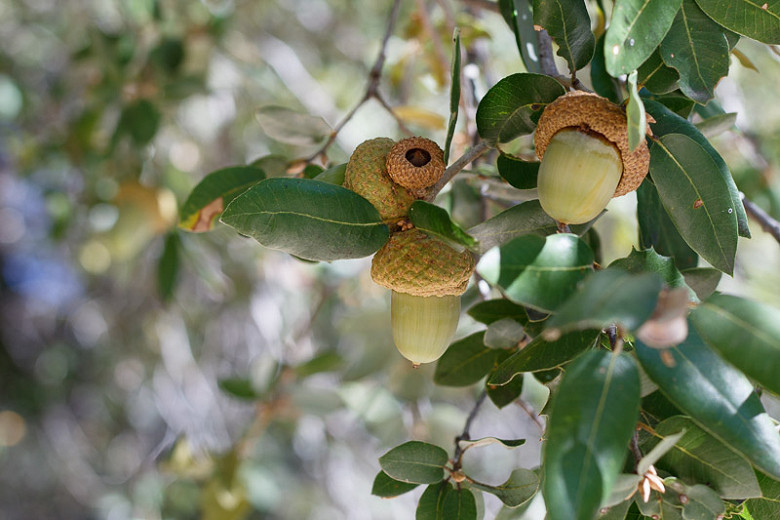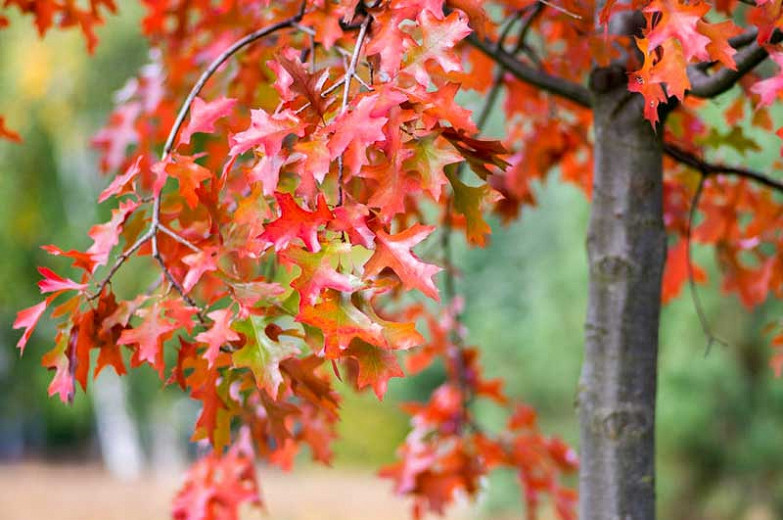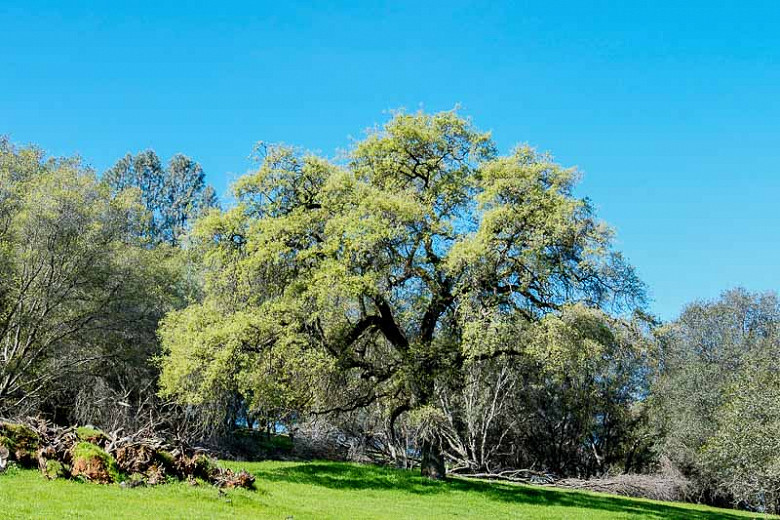Quercus agrifolia (Coast Live Oak)
A beautiful California native, Quercus agrifolia (Coast Live Oak) is a large evergreen tree adorned with a short, stout trunk and a dense, broadly rounded crown. Its crooked, spreading branches are clothed with leathery, oval, convex, holly-like, dark green leaves, 1-3 in. long (2-7 cm). Most of its old leaves drop in early spring. Flowers are produced in spring: the male flowers are pendulous catkins, 2-4 in. long (5-10 cm), while the female flowers are quite inconspicuous. The fruit is a narrowly egg-shaped, brown acorn which matures about 7-8 months after pollination. The acorns are a valuable source of food for small mammals and birds. With age, the smooth dark gray bark of the contorted, massive and gnarled trunk becomes thick and deeply furrowed. A magnificent and picturesque tree for large areas, bank stabilization or sheared to form an evergreen hedge.
- Grows up to 20-50 ft. tall and wide (6-15 m). Old trees can reach 100 ft. (30 m).
- A full sun to partial shade lover, this tree tolerates a wide range of soil conditions but prefers a deep, well draining loam which it usually develops over time from leaf drop. Water once per week the first year, decreasing to about once per month after the first year, until the tree is about 10 feet tall (3 m). Avoid direct summer water thereafter. Do not fertilize.
- Coast Live Oaks prefer to have their roots shaded. Surround young specimens with mulch (a thick layer of oak leaves), rocks, or smaller native plants that will provide shade to the roots.
- Perfect as a specimen plant, banks and slopes (erosion control) or as an evergreen hedge.
- Susceptible to several pests and diseases including Gold Spotted Oak Borer and Sudden Oak Death.
- Toxic to horses.
- Native mostly to the coast side of California's Coast Range, and along streams draining into the Central Valley, ranges from the Mendocino County in the north to Mexico's Baja California.
Requirements
| Hardiness | 9 – 11 |
|---|---|
| Heat Zones | 9 – 11 |
| Climate Zones | 7, 8, 9, 14, 15, 16, 17, 18, 19, 20, 21, 22, 23, 24 |
| Plant Type | Trees |
| Plant Family | Quercus – Oaks |
| Exposure | Full Sun, Partial Sun |
| Season of Interest | Spring (Early,Mid,Late)Summer (Early,Mid,Late)FallWinter |
| Height | 20' – 50' (6m – 15m) |
| Spread | 20' – 50' (6m – 15m) |
| Water Needs | Low |
| Maintenance | Low |
| Soil Type | Chalk, Clay, Loam, Sand |
| Soil pH | Acid, Alkaline, Neutral |
| Soil Drainage | Well-Drained |
| Characteristics | Showy, Evergreen |
| Native Plants | United States, California |
| Attracts | Birds, Butterflies |
| Garden Uses | Banks and Slopes, Hedges and Screens |
| Garden Styles | Coastal Garden, Mediterranean Garden, Prairie and Meadow |
